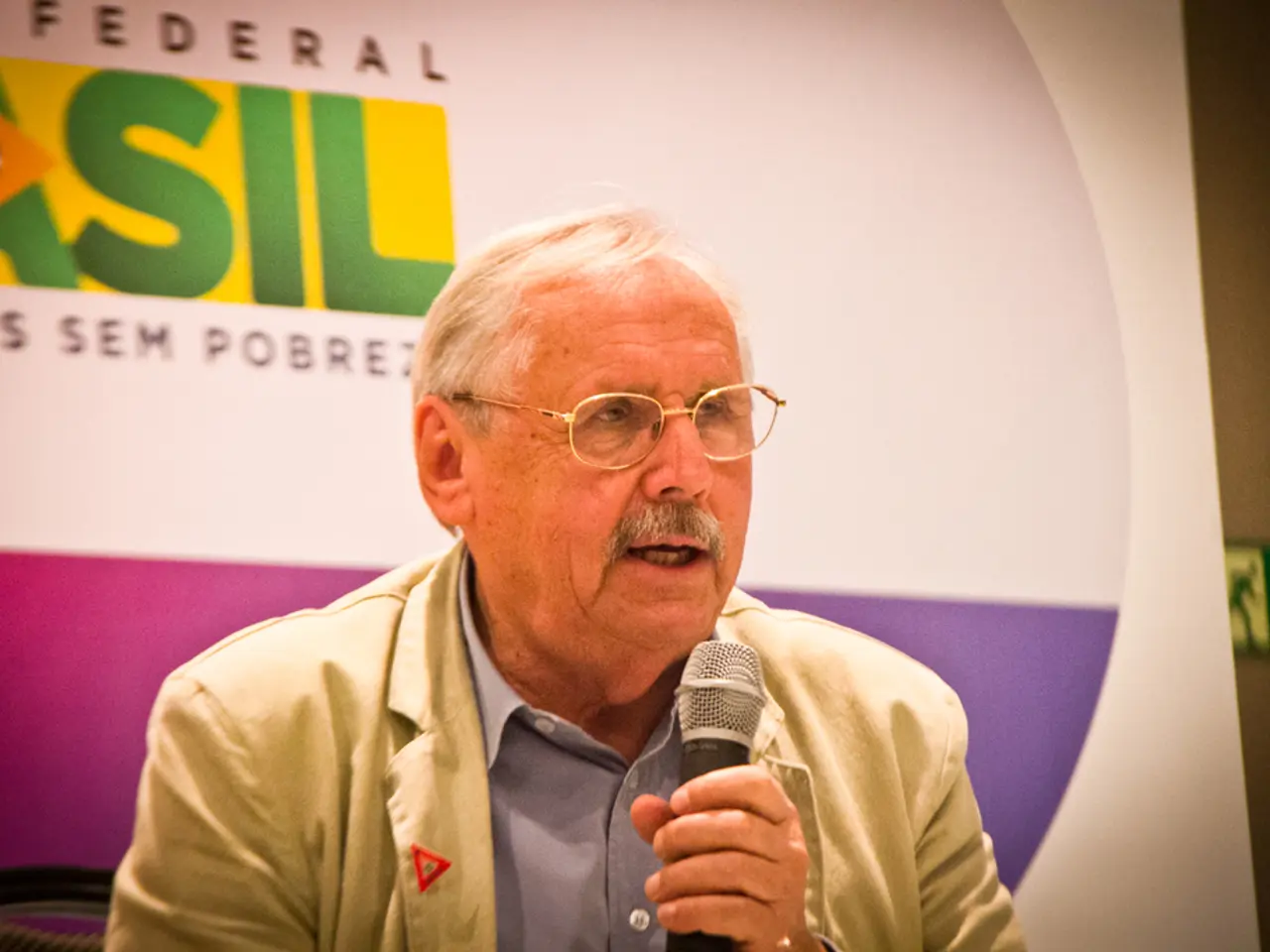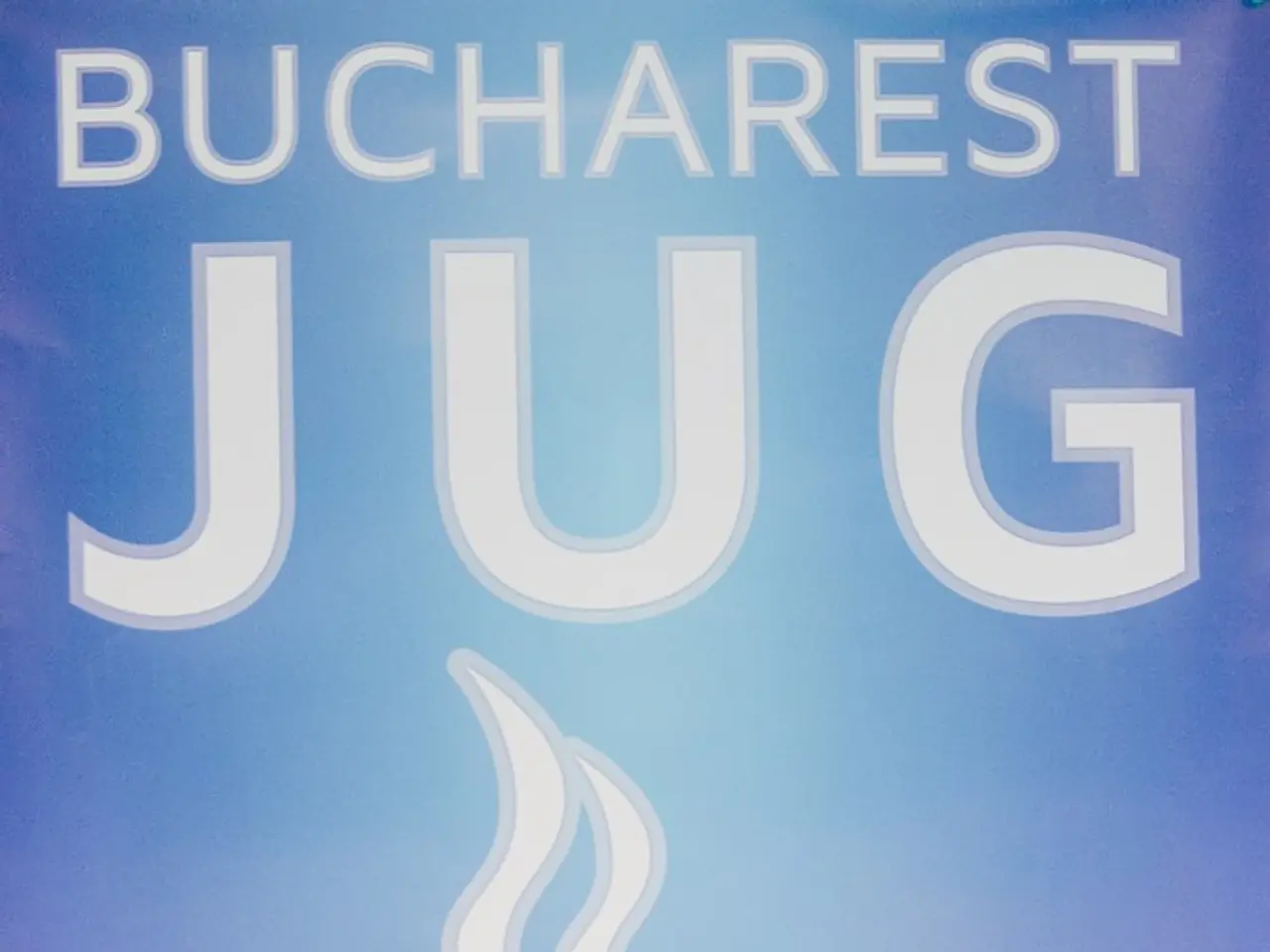Fed commences July meetings deliberations; potential for interest rate reduction?
In the ongoing saga of monetary policy decisions, the Federal Reserve (Fed) maintained the federal funds rate at its current range of 4.25% to 4.5% during the July 2025 Federal Open Market Committee (FOMC) meeting. This decision, which was in line with the consensus of most FOMC voting members, comes amidst pressures to lower rates from political figures and economic uncertainties.
The meeting saw a notable development with two dissents from Fed Governors Michelle Bowman and Christopher Waller, both Trump appointees, who advocated for a potential rate cut as soon as the July meeting. This marked the first time in decades that two members voted against the majority, signaling a shift towards more dovish views within the Fed.
Despite this dissent, the majority of the FOMC preferred to wait for more data over the summer before easing policy. The Fed communicated uncertainty and caution, highlighting ongoing elevated risks and a slowing economy. Financial experts anticipate that the Fed will likely resume easing in September with rate cuts over the next 12 months, guided by data on inflation, tariffs, and labor market conditions.
The meeting took place under the shadow of criticisms levelled at Fed Chair Jerome Powell and some board members for perceived political influence, primarily due to pressure from the Trump administration to lower rates. However, Powell and most of the committee chose to uphold the Fed's independence by defying political pressure and maintaining the current interest rate stance in July.
EJ Antoni, chief economist for the Heritage Foundation, expressed doubt that Powell will cut interest rates, citing Powell's past actions, specifically his decision to lower interest rates before last year's election but not since President Trump's return to office. Antoni believes that Powell is not politically independent as he claims to be and that the broader Federal Reserve board and the Fed institution as a whole have political interests that do not align with the genuine interests of the American people.
In summary, the July 2025 FOMC meeting saw a cautious but flexible stance from the Fed, balancing inflation containment with economic growth concerns amid political scrutiny. The market expects rate cuts may resume in September, depending on inflation and labor market data. The stage is set for a potentially interesting few months as the Fed navigates these challenges.
| Aspect | Detail | |-----------------------|------------------------------------------------------------------------------------------------| | July 2025 FOMC Outcome| Interest rates held steady at 4.25%-4.5% | | Dissents | Two members (Bowman, Waller) favored rate cuts, first dual dissent since 1993 | | Fed Chair Response | Maintained independence, resisted political pressure for immediate cuts | | Forward Guidance | Market expects rate cuts may resume in September depending on inflation and labor market data | | Criticism | Powell criticized politically but committee prioritized data-driven, independent monetary policy|
- The July 2025 Federal Open Market Committee (FOMC) meeting saw not only a reaffirmation of the current interest rate stance, but also a significant shift towards more varied viewpoints within the committee, as evidenced by dissents from two members (Bowman, Waller) who advocated for an immediate rate cut.
- Amidst political scrutiny, financial experts are anticipating that the Fed may resume easing in September, with potential rate cuts over the next 12 months, guided by data on inflation, tariffs, and labor market conditions, showcasing a balancing act between inflation containment and economic growth concerns.




